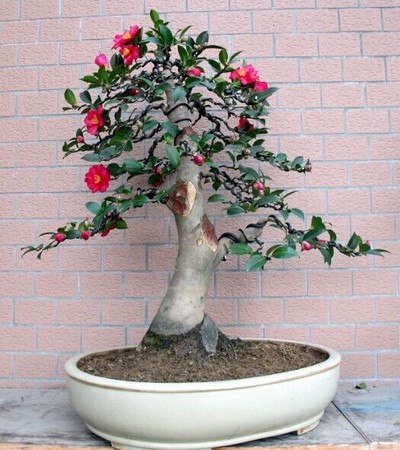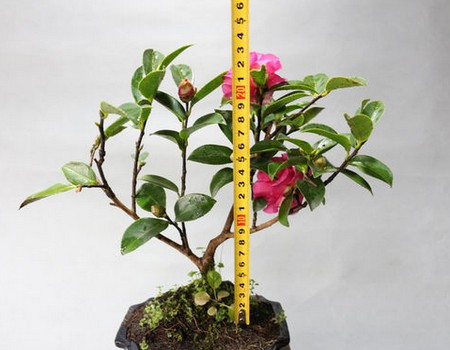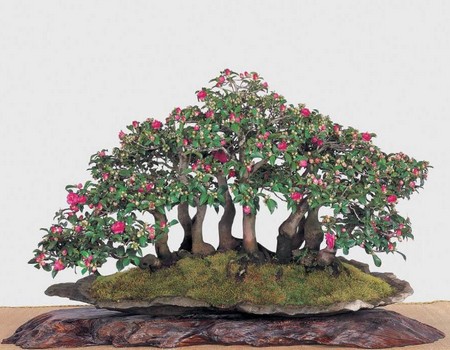Pruning method of tea plum bonsai
Tea plum bonsai can be trimmed and reshaped all the year round. Seasonally, it can be divided into spring, summer, autumn and winter. Pruning and shaping in winter and spring, the pruned branches have a strong ability to sprout, and more buds will sprout after pruning. Therefore, winter and spring pruning is suitable for tree shape dwarfing, modeling, retraction and restoring tree potential; pruning in summer and autumn, the sprouting ability of the pruned branches is weak, so it is suitable for pruning inner bore branches, cross branches, diseased branches, etc., as well as the shape of the tree and the pruning of improving ventilation and light transmission conditions in the plant crown.

From the point of view of improving the quality and flower quantity of tea plum, the best time for pruning and shaping is after flowering and before spring shoot sprouting. Specifically, tea plum is trimmed in March, red camellia is trimmed in April, and Yunnan camellias are best trimmed in May.
If pruning is carried out after the flower bud is formed or before the flower bud expands, it can not only make the nutrients more concentrated, but also play a role in thinning buds. As the flower buds are reduced, the flowers can bloom very large. To some extent, this pruning can have the same effect as using gibberellin to promote flowers. Therefore, when to trim and reshape should be decided according to the specific purpose of pruning.
Camellia oleifera has strong sprouting power and can endure strong shearing or green hedge pruning. Generally, pruning is best pruned around March after flowering.
Pruning method:
1. Cut off unnecessary branches: cut off dense branches, trunk buds, introverted branches and other unnecessary branches to make them refreshing.
2. Adjust the shape of the tree: cut off the outer branches and the branches that make the crown messy to adjust the size of the tree. If you want to maintain the height of the tree, or reduce the shape of the tree, the trunk should be cut off from the upper part of the node (the branch bifurcation).
Time: 2019-06-11 Click:
- Prev

The modeling method of tea plum bonsai
Tea plum has been favored by people since ancient times. it has exquisite posture, elegant leaf shape, beautiful flowers and long flowering period. it is a famous flower with excellent ornamental flowers and foliage. The purpose of making tea plum bonsai is to watch, and the premise of viewing is to give tea plum a good shape, so how to shape is a very important point.
- Next

Tea plum bonsai watering skills
For the new pot of tea plum, there are many places to pay attention to. Pay special attention to watering, watering should be done properly. For those of you who have questions about this, this article will give you a detailed answer. If you just got a pot of tea plum, and it is a new pot, first of all, pay attention to watering problems. Water thoroughly
Related
- Fuxing push coffee new agricultural production and marketing class: lack of small-scale processing plants
- Jujube rice field leisure farm deep ploughing Yilan for five years to create a space for organic food and play
- Nongyu Farm-A trial of organic papaya for brave women with advanced technology
- Four points for attention in the prevention and control of diseases and insect pests of edible fungi
- How to add nutrient solution to Edible Fungi
- Is there any good way to control edible fungus mites?
- Open Inoculation Technology of Edible Fungi
- Is there any clever way to use fertilizer for edible fungus in winter?
- What agents are used to kill the pathogens of edible fungi in the mushroom shed?
- Rapid drying of Edible Fungi

